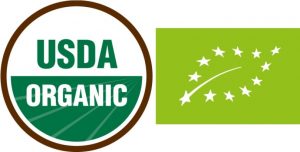The USDA’s Foreign Agricultural Service (FAS) issued a February 11, 2019 report highlighting information from its post in Berlin. The focus — US exports of mostly fresh organic fruits, vegetables, and milk. Data on processed organic food exports to Europe from the US is not as readily available, so many product categories are not covered in this FAS report.
The key message? “The boom on the organic food market in the European Union (EU) continues. U.S. organic exports to the EU are set to double and hit record levels for 2018…” compared to just a year earlier!!
The report notes that USDA’s endorsement of the annual BioFach trade show, the world’s most heavily attended organic trade fair, “…provide(s) an excellent gateway for U.S. companies for establishing contact with business partners.”
Recall that the US/EU organic harmonization and reciprocity agreement, promoted by then-USDA Deputy Secretary Kathleen Merrigan and brokered by NOP (National Organic Program) and FAS staff, went into effect on June 1, 2012, paving the way for USDA-certified organic food products to be sold throughout the EU, and vice versa.
The impact of this important agreement was, according to the FAS report, “…streamlining trade between the world’s two leading organic markets.”

For those organic exports for which tracking data are available, FAS is projecting exports will rise from $12 million in 2017 to $24 million in 2018. But, according to FAS, “the actual total of U.S. exports of organic products to the EU is likely much higher.”
The organic food market in the EU was just under $40 billion in 2017, according to data collected by FAS offices in over two-dozen EU countries. Over the last 10 years, total organic food sales in the EU have more than doubled, with Germany and France accounting for over one-half of total EU organic food sales.
The highest per capita expenditures on organic food occurs in Denmark, at over $370 annually. In five EU countries, consumers spent $100 or more per capita on organic food purchases in 2017, averaging close to $200.
For comparison, in 2018 average per capita expenditure on organic food in the U.S. were about $145. For more on why consumer demand for organic food is lagging behind the EU, see Part III of our series on organic apples in Washington state, which takes a deep look at what is holding back the organic market in the U.S.
The growth in demand for organic food across the EU has led to a doubling of the certified-organic acreage in the past decade, reaching 13 million hectares in 2017. Given Australia’s recent private-sector funding commitment to support farmers transitioning to organic and continued expansion in the U.S. and elsewhere,
Add to that Australia’s recent private-sector funding commitment to support farmers transitioning to organic and continued expansion in the U.S. and elsewhere, and all of a sudden organic farming seems ready to go global.
Of this 13 million hectares, about 45% are permanent, organically managed grasslands, supporting the extensive and growing grassfed beef and dairy industries, as well as pasture-raised pork and poultry.
The rapid growth in the EU in forage-fed and pasture-raised organic livestock is driven by strong consumer demand and favorable economics. It is also consistent with the recommendations in multiple reports calling for a shift of livestock production from grain and concentrate-dependent CAFOs to farms more heavily reliant on forage-based feeds, e.g. the EAT-Lancet Commission report.
Source:
Leif Erik Rehder, “U.S. Organic Food Exporters Set to Double Sales to EU,” GAIN Report Number: GM19004, USDA Foreign Agriculture Service, February 11, 2019.

